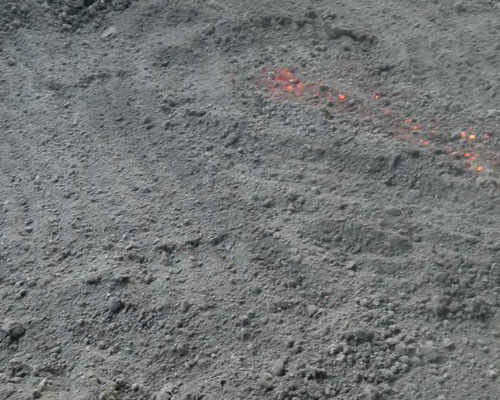Alkali metals and alkaline earth metals in aluminum melt mainly come from alkali metals and alkaline earth metal elements in the aluminum electrolysis process, such as Na, Li, Ca, etc., and also from aluminum alloy fluxes. Aluminum alloy fluxes are generally composed of alkali metals and alkaline earth metals. The main components of the chloride and fluoride are KCl, NaCl, NaF, CaF, Na3A1F6, Na2SiF6, etc. After the aluminum refining flux is used, the above-mentioned alkali metals and alkaline earth metals will remain in the melt.
Take alkali metal sodium as an example. Sodium is almost insoluble in aluminum, and the maximum solid solubility is less than 0.0025%. In Al-Mg alloy, when the magnesium content exceeds 2%, magnesium deprives silicon and separates free sodium. Na is solidified during the solidification process. Existing in the grain boundary, during the plastic deformation process, due to its low melting point, it regains its free state and forms the source of cracks. As the amount of deformation increases, the cracks converge to form cracks, which is the so-called “sodium brittleness” phenomenon.
Calcium in aluminum alloy will form new phases CaAl4 and CaAl2 with aluminum. The formation of these new phases promotes the reduction of strengthening phases in aluminum alloy. For example, when the CaAl4 phase is present in the aluminum alloy, the strengthening phase θ phase (CuAl2) will decrease, and the hardness of the aluminum alloy after solution aging treatment will also decrease. From the microstructure, the CaAl4 phase is a body-centered tetragonal structure. Due to the close lattice constant and the Cu atomic radius, the Cu in the θ phase can replace the Al in the CaAl4 to form a new compound phase, thus strengthening Phase reduction. When the Ca content reaches 1.2%, Cu atoms replace two aluminum atoms in CaAl2 to form a new compound phase. The new compound does not dissolve into the aluminum matrix and cannot undergo precipitation strengthening. The calcium in the aluminum alloy reduces the as-cast hardness, and when the calcium content increases, the hardness of the aluminum alloy after heat treatment also decreases. In addition, when the harmful impurity element Ca in the aluminum melt is large, the fluidity of the aluminum alloy melt will become poor, and it is easy to get air and microscopic pinholes or looseness. In severe cases, segregation hard and brittle compounds will be produced, which will The scrap rate of castings has increased significantly, and the heat treatment strengthening effect of aluminum alloys will be reduced.
According to existing reports, the method that can be used to remove alkali metals in aluminum melt is to use in a holding furnace
Chlorine, chlorine-containing refining agents (such as hexachloroethane, carbon tetrachloride, etc.) or fluoride-containing refining agents are used for refining the melt. However, in the process of using chlorine, chloride or fluoride, there will be chlorine gas floating out of aluminum melt, chlorine gas and hydrogen fluoride generated after the reaction with alkali metals, hexachloroethane and tetrachloride gasified by heating The generation of carbon gas will seriously damage the furnace lining and shorten the furnace life. Secondly, it will cause occupational hazards to production operators.
An environmentally friendly and efficient way of alkali metal/alkaline earth metal is realized by substitution reaction. The basic principle is to use the characteristics of active wave of alkali metal/alkaline earth metal chemical characteristics according to the order of metal activity, and add other metal salts with relatively inactive cations. , And then removed by other physical methods. Taking the removal of Na in magnesium-containing alloys as an example, the removal is generally achieved through the substitution reaction of MgCl2 and elemental Na. The basic reaction formula is as follows
MgCl2+2Na=2NaCl+Mg
At present, high-performance alloys are developing in the direction of large specifications, and the size requirements of cast slabs are gradually increasing. The residual gas, impurities, slag and alkali/alkaline earth metals in the aluminum alloy melt will be more harmful during the processing and deformation of the cast slab.

